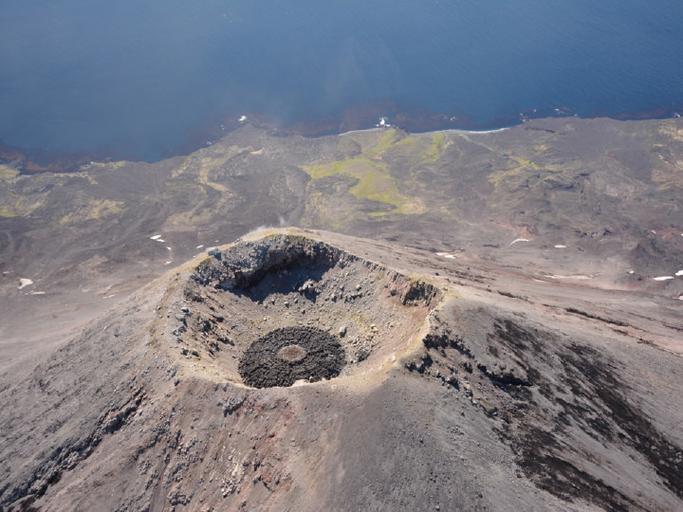MAKE A MEME
View Large Image

| View Original: | Mt._Cleveland_Lava_Dome.jpg (720x540) | |||
| Download: | Original | Medium | Small | Thumb |
| Courtesy of: | www.flickr.com | More Like This | ||
| Keywords: usgs alaska science volcano aerial natural hazards naturalhazards cleveland outdoor sand road This is a recent aerial photo taken on August 4, 2015 showing the lava dome within the Cleveland volcano summit crater. The volcano continues to see low-level unrest. Cleveland is a stratovolcano (a steep-sided volcano usually conical in shape) that forms the western portion of Chuginadak Island, a remote and uninhabited island in the east central Aleutians. The volcano is located about 75 km (45 mi) west of the community of Nikolski, and 1500 km (940 mi) southwest of Anchorage. The most recent significant period of eruption began in February, 2001 and produced 3 explosive events that generated ash clouds as high as 39,000 ft above sea level. The 2001 eruption also produced a lava flow and hot avalanche that reached the sea. Since then, Cleveland has been intermittently active producing small lava flows, often followed by explosions that generate small ash clouds generally below 20,000 ft above sea level. These explosions also launch debris onto the slopes of the cone producing hot pyroclastic avalanches and lahars that sometimes reach the coastline. You can follow updates on Cleveland volcanic activity at on.doi.gov/ClevelandVolcano. Photo credit: John Lyons, AVO/USGS. This is a recent aerial photo taken on August 4, 2015 showing the lava dome within the Cleveland volcano summit crater. The volcano continues to see low-level unrest. Cleveland is a stratovolcano (a steep-sided volcano usually conical in shape) that forms the western portion of Chuginadak Island, a remote and uninhabited island in the east central Aleutians. The volcano is located about 75 km (45 mi) west of the community of Nikolski, and 1500 km (940 mi) southwest of Anchorage. The most recent significant period of eruption began in February, 2001 and produced 3 explosive events that generated ash clouds as high as 39,000 ft above sea level. The 2001 eruption also produced a lava flow and hot avalanche that reached the sea. Since then, Cleveland has been intermittently active producing small lava flows, often followed by explosions that generate small ash clouds generally below 20,000 ft above sea level. These explosions also launch debris onto the slopes of the cone producing hot pyroclastic avalanches and lahars that sometimes reach the coastline. You can follow updates on Cleveland volcanic activity at on.doi.gov/ClevelandVolcano. Photo credit: John Lyons, AVO/USGS. | ||||